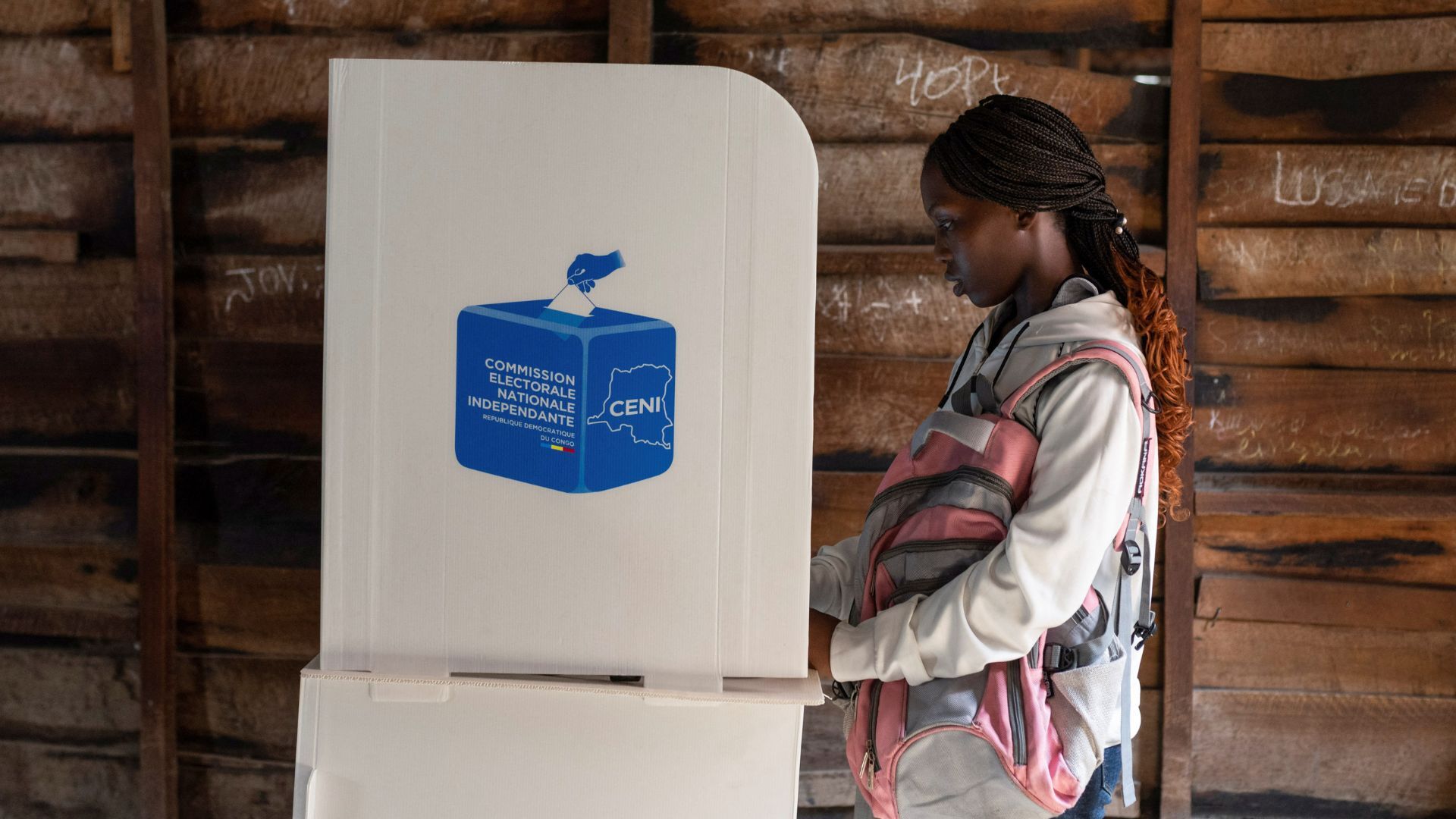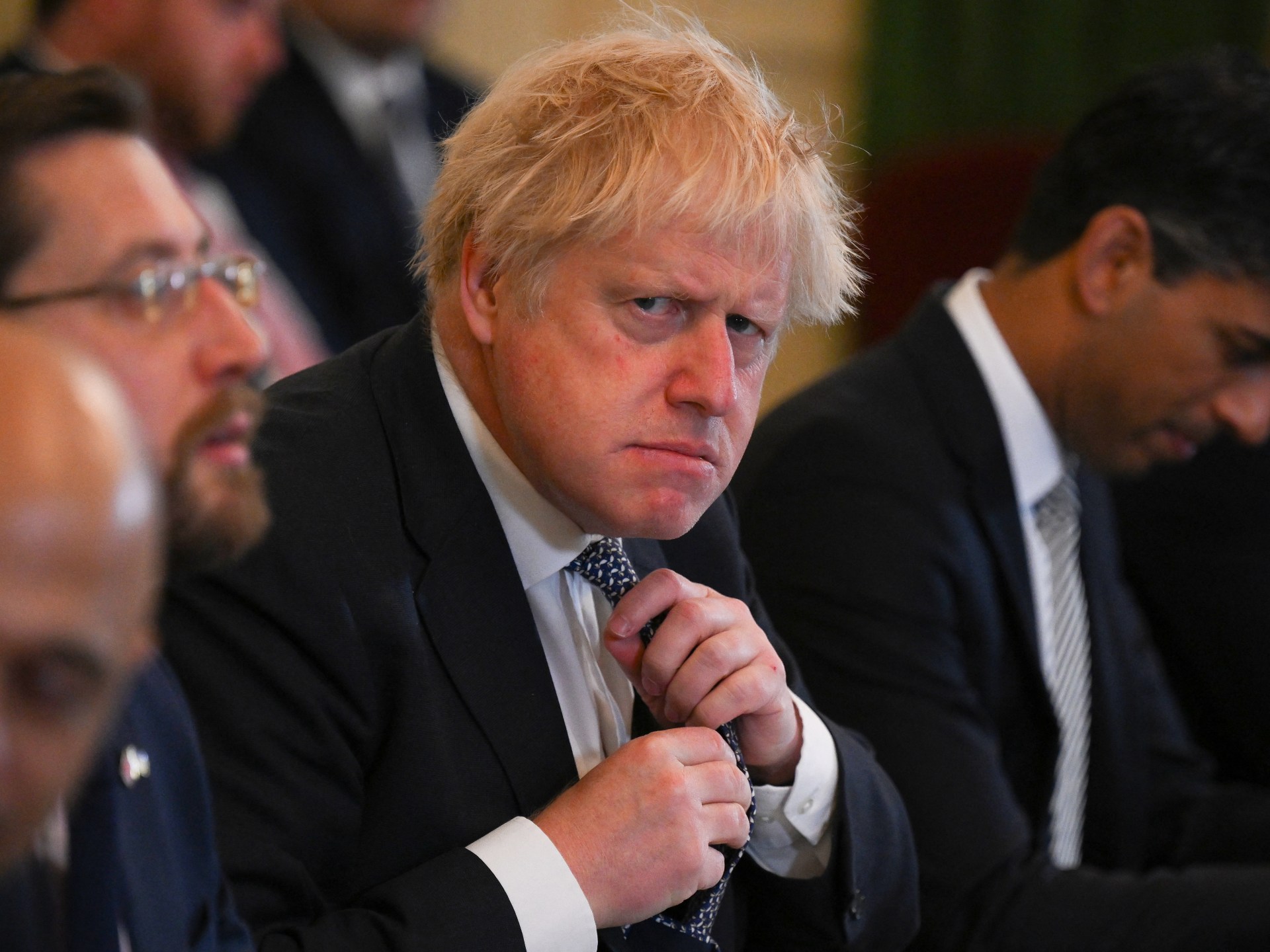‘If the Chinese attack Taiwan, the first assault will come here’
Kinmen Islands, Taiwan – A storm is raging across the small Taiwanese island of Kinmen.
On an empty beach along the island’s west coast, strong waves pound a line of rusty defensive stakes, secured in concrete foundations, that run like the spikes on a hedgehog’s back along the rocky coastal stretch.
Further up the beach, despite the wild weather, Kinmen residents Robin Young and Ne-Xie Wang are watching the waves crash against the shore. Behind them, the wind is howling through the cracks of old military outposts and long abandoned American-made tanks.
The fortifications once formed the backbone of the defences of western Kinmen, where Taiwan proper is 200km (124 miles) away and the Chinese mainland less than five (three miles).
As the storm sweeps away a group of low-hanging clouds over the water, the Chinese mainland and the towers of the Chinese city of Xiamen emerge from the gloom.
With the wind threatening to tear off his jacket and mask, Young gestures towards Xiamen and then points down to the beach.
“If the Chinese attack Taiwan, the first assault will come here.”
The drums of war
A Chinese assault on Kinmen is not a theoretical scenario.
At the end of the Chinese civil war in 1949, Kinmen was among a group of outlying islands that remained in the hands of the defeated Nationalists, along with Taiwan itself. The Communists tried twice to capture Kinmen, but both times were repulsed by Nationalist forces.
Instead, the Communists conducted an incessant artillery barrage of Kinmen for more than two decades in an attempt to pound the Nationalists and the people of Kinmen into submission.
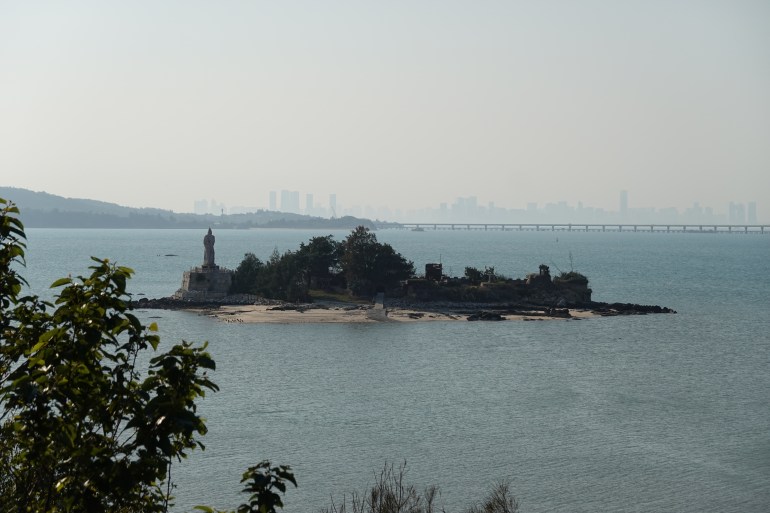
At the same time, the Nationalists effectively turned the island into a military colony where the number of soldiers at times surpassed the total population of about 100,000 Kinmenese.
It was only as Taiwan democratised that Kinmen began to open up – first to the rest of Taiwan, and at the turn of the century to Chinese tourists as well.
But in recent years, tensions between China and Taiwan have been rising steadily once more, and with US House Speaker Nancy Pelosi’s visit to Taiwan on August 2, the situation exploded into the worst crisis between the two countries in more than 25 years.
The Chinese responded to Pelosi’s visit by conducting their largest-ever military exercises in the Taiwan Strait and sending missiles across Taiwan’s main island.
Tanks were deployed to the beaches of Xiamen, and Taiwan drove away drones sent over Kinmen by Chinese forces.
Ne-Xie Wang takes a brief walk from the beach to Kinmen’s largest town of Jincheng, not far from where the former aircraft maintenance technician was born and brought up.
He laments the state of affairs between China and Taiwan and fears trouble ahead: “The relationship has really soured quickly in recent years.”
For 56-year-old Wang, today’s situation has echoes of his childhood, when he and his friends would have to rush to the nearest bomb shelter whenever the Chinese fired an artillery barrage against the island.
“In my mind, both sides should do everything in their power to avoid further escalation,” he says.
“Otherwise, I’m afraid that the Kinmenese will be the first to pay a heavy price.”
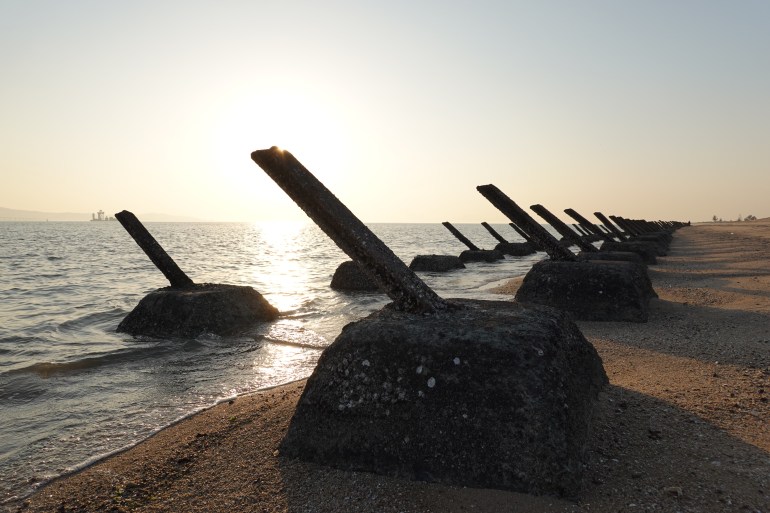
Su Ching Song was born in Kinmen but has been living in Taiwan’s capital, Taipei, since moving there to study at university 15 years ago.
She is also afraid that her native Kinmen will be the first victims of rising tensions.
“I don’t think the government in Taipei is without fault if it ends in a Chinese attack,” she said over WhatsApp, offering Pelosi’s visit as an example.
“The DPP (Democratic Progressive Party) government in Taipei must have known that her visit would provoke a strong response from China, but they let her come anyway. I don’t support the aggressive Chinese response, but DPP is at the same time being very dismissive of China’s red lines, and the Chinese-Taiwanese relationship is not going to get better if both sides intentionally provoke each other.”
‘Small fish’
Fisher Kuan-Lin Yu wishes that he could go back to the time when relations across the Taiwan Strait were less politically heated.
Back then, he worked as a driver and tour guide for Chinese tourists coming to Kinmen. That ended when borders were closed following the first outbreak of COVID-19 in Wuhan, and Yu returned to fishing.
“Before the current government in Taipei came to power [in 2016], it seemed that China and Taiwan were growing closer to the benefit of everyone including the Kinmenese,” he said.
At the same time, Yu understands why the relationship has deteriorated.
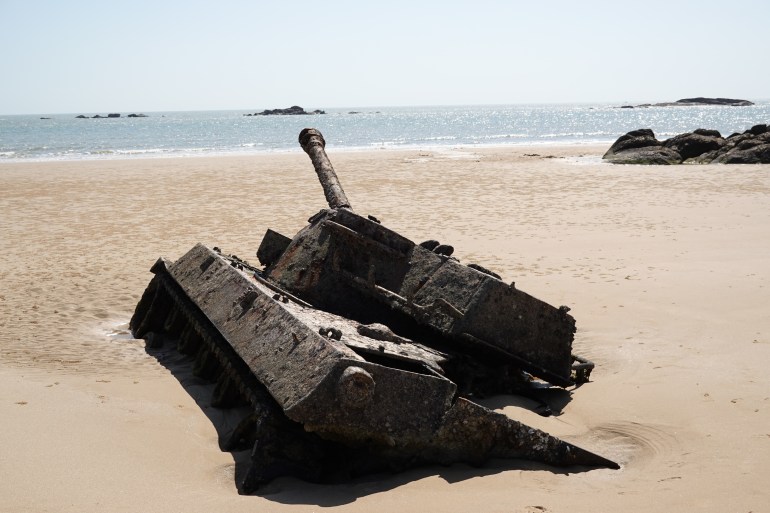
[Frederik Kelter/Al Jazeera]
Beijing claims Taiwan as its own territory and has taken an increasingly assertive approach to the island since the DPP’s Tsai Ing-wen — who opposes unification — was elected. She won a second election victory in a landslide in 2020.
Even before the military drills this month, Beijing had been sending warplanes into Taiwan’s air defence zone on a regular basis. It has not ruled out the use of force to take the island and reiterated that threat in a white paper published on Wednesday.
“With the DPP government’s flirting with formal independence for Taiwan on one hand and the Chinese meddling in Hong Kong and their aggressive rhetoric towards Taiwan on the other, I understand why both sides have trouble seeing eye to eye these days,” Yu said.
“Still, I’d much rather that the Chinese spend their money here than (on) their artillery ammunition.”
Wu Tseng-dong holds one such piece of ammunition in his arms in his workshop in central Kinmen.
“It was a gift from Chairman Mao,” he jokes, chuckling before he places the shell on the floor.
The artillery shell is empty and just one of the hundreds of thousands that struck Kinmen during the decades of Chinese bombardment.
Wu crafts the steel in the old Chinese shells into kitchen knives, which he sells in his workshop.
“It is about turning war and conflict into something constructive,” he says before getting to work with a cutting torch on the shell.
Less than 30 minutes later, Wu has turned it into a knife.
“I see what I make here as a symbol of peace at a time where we are heading dangerously close to war.”
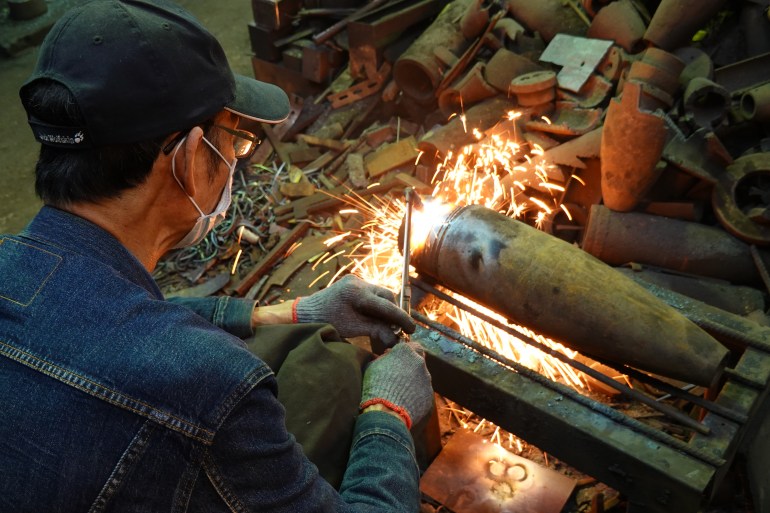
For Kinmen, there are legitimate reasons to be concerned, according to Chen Fang-Yu, who is an assistant professor at Soochow University in Taipei and studies the political relations between Taiwan, China and the United States.
He says that although China now possesses ballistic missiles and aircraft carriers, which diminish Kinmen’s strategic importance as a launching pad for any invasion of Taiwan, the island retains a symbolic significance.
“As tensions mount between China and Taiwan, the leadership of the Chinese Communist Party [CCP[ might end up in a situation where they need a tangible win in the Taiwan Strait but are not ready for an all-out assault on Taiwan. In that scenario, seizing the largely demilitarised outlying Taiwanese islands of Kinmen and Matsu could provide a symbolic victory for the CCP; akin to what Russia did with Crimea in 2014.”
Kuan-Lin Yu prays that Kinmen will not suffer the same fate as Crimea, which was annexed by Moscow.
“But that is not really in my hands or the hands of the Kinmenese. We are just a small fish in a strait of leviathans.”



